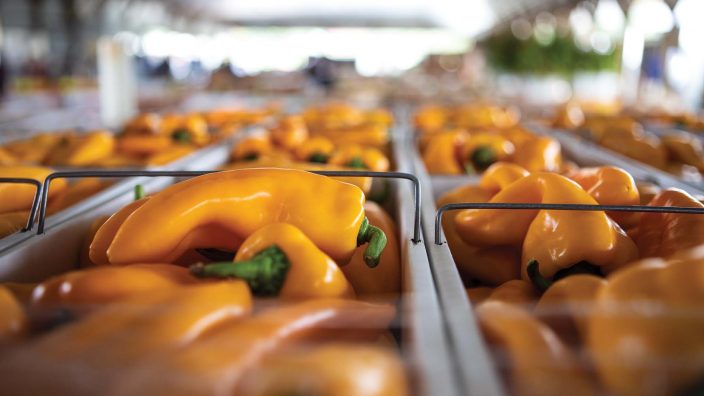Applications for Ohio Farm Bureau Health Plans now available
Members have three ways to apply: contacting a certified agent, calling 833-468-4280 or visiting ohiofarmbureauhealthplans.org.
Read More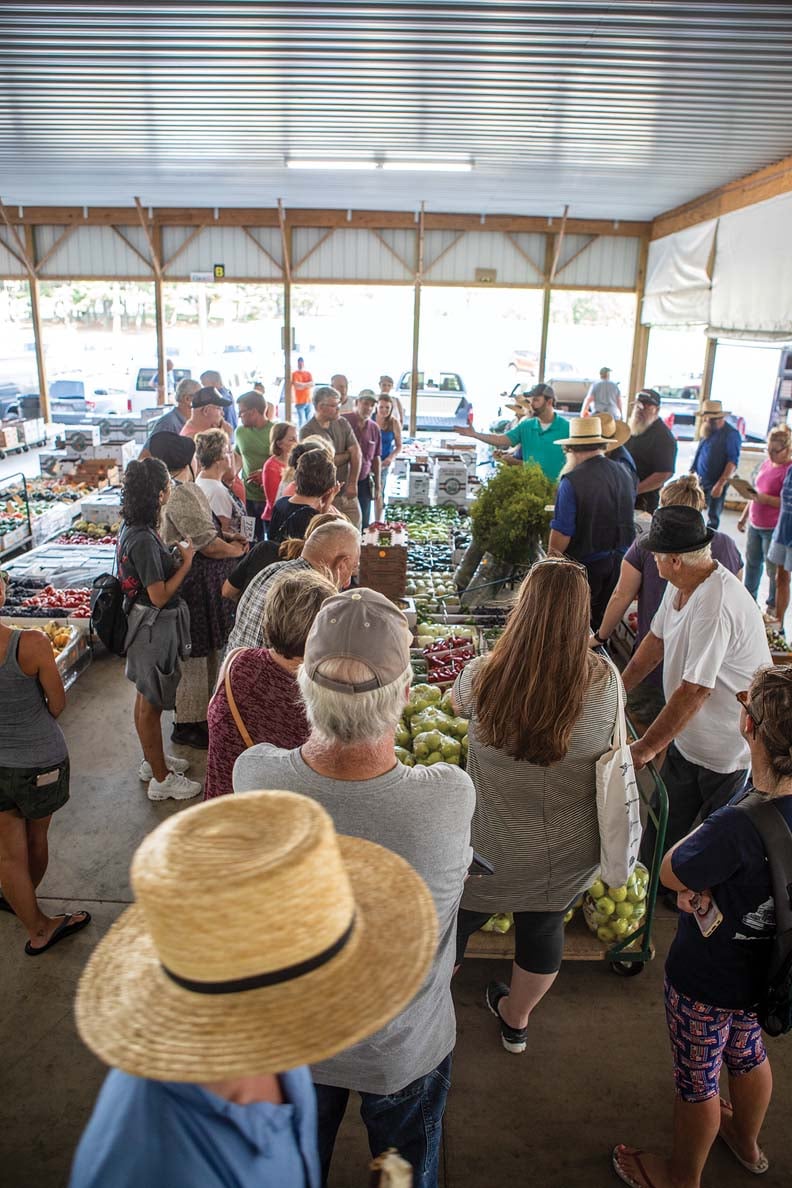
One of the places to be in West Salem on a warm summer evening is at the intersection of OH-301 and County Road 500. In the summer of 2019, crowds gathered under the green tin roof of an open barn listening to the rhythmic hum of an auctioneer’s song. A sea of ball caps and straw Amish hats gathered around bulk lots of brightly colored, fresh produce to cast their bids at County Line Produce Auction.
Since its first year of business in 2013, County Line has served the growers of the local community, mostly Amish, with a sustainable, consistent marketplace and plenty of repeat buyers.
“Our buyers say we’re their one stop shop because we have good variety, good product and quality,” said Nick DeFelice, County Line auctioneer and part owner. “Buyers come from all over, primarily in Ohio, but we also attract many from surrounding states.”
The seasonal auction usually runs from April through November, but due to COVID-19 they moved this year’s first sale to May 4. Even in these trying times, the auction’s future appears bright and full of opportunity.
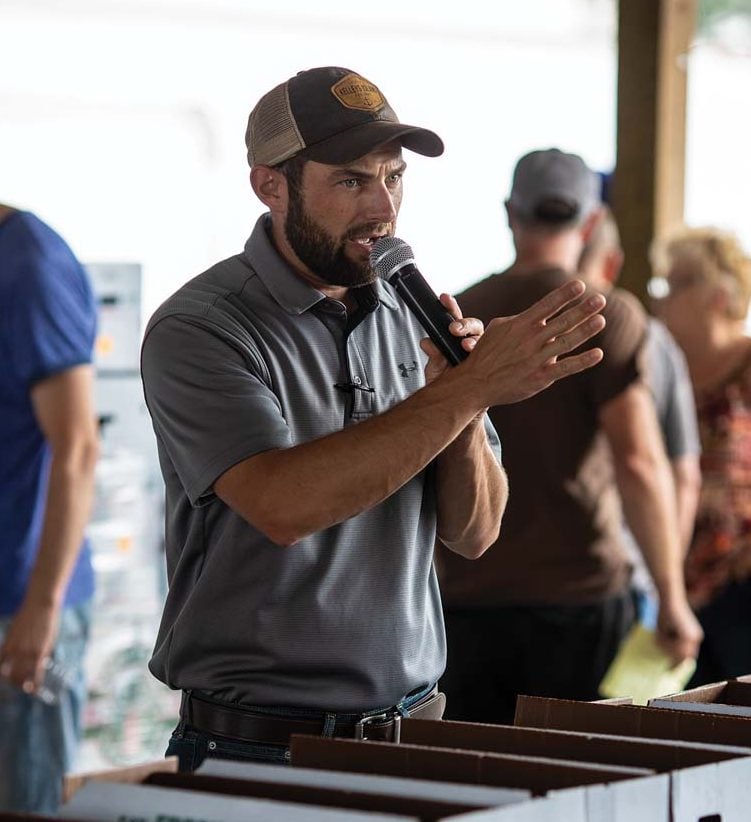
A pivotal part of what gives County Line its success and identity are the contributing growers. During the peak season, usually mid-summer through mid-fall, the sale can expect about 150 unique growers, according to Bruce Imhoff, auction manager.
“We have more than doubled since 2013 and grown every year since,” he said. “A lot of our guys are in their 50s and now their children are coming along. They grew up on the farm and learned how to do produce and start up their own farms and support the auction.”
An estimated 95% of all consigners are Amish. Their farms dotting the surroundings towns are as unique as the families who own them. In the spring months, some specialize in flowers and early season crops, others do bulk wholesale produce through the summer months and there are those who grow pumpkins and gourds in the fall. Many do all seasons and cater to different buyers.
In the busy season, three rings will happen simultaneously. One is for bulk produce lots targeted at wholesale buyers and restaurants, and two others have the smaller assorted produce lots. There is even a section for home baked goods sold for cash.
Imhoff said some of th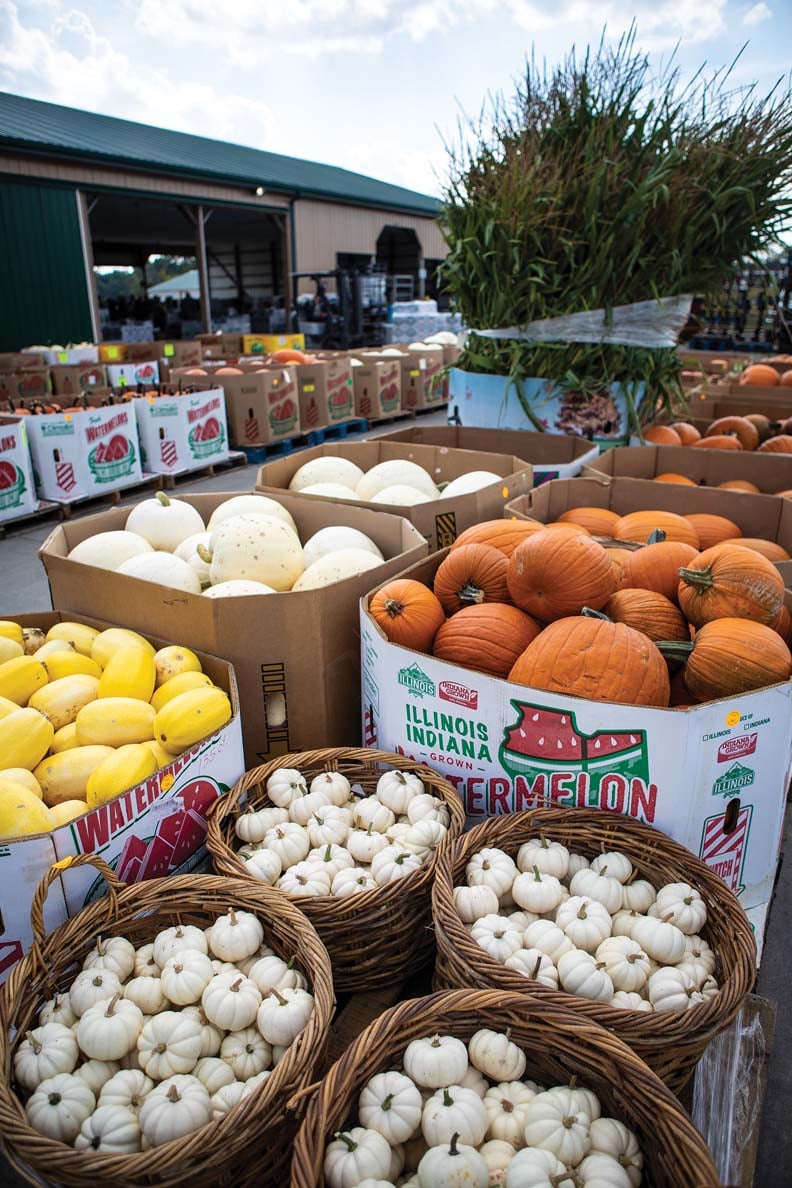 e growers specialize in organic production, a market they hope to expand.
e growers specialize in organic production, a market they hope to expand.
For many producers in the nearby Amish community, the auction has provided a way to make a living off their farms. One grower who has been with County Line since its beginning said the auction provides him with the security of a local market, enabling him to sell his produce with surety and still be able to stay at home and work alongside his family.
“The auction would not be what it is without the support of the community and the growers who are committed to us,” Imhoff said. “The secret is you have to have a community committed to our auction and willing to support us and that’s what we have. It’s how we’re successful.”
The vast majority of everything sold through County Line is locally grown. The sale, which runs Monday, Wednesday and Friday throughout the season, allows growers to harvest, wash and package their produce multiple times a week when things are at their peak freshness.
“Our setup allows farmers to get things to auction to grocery store shelf within 24 hours or less of being picked at peak freshness. Our buyers are well aware this is some of the freshest produce made available. Plus, they really like knowing where their food comes from,” DeFelice noted.
Additionally, in order to sell, all producers must participate in a Good Agricultural Practices training. Imhoff said many of them who specialize in large wholesale lots also opt to do third party audits that their target buyers are looking for. At the sale they will be identified with a sticker so buyers looking for that extra assurance of food safety can easily spot it.
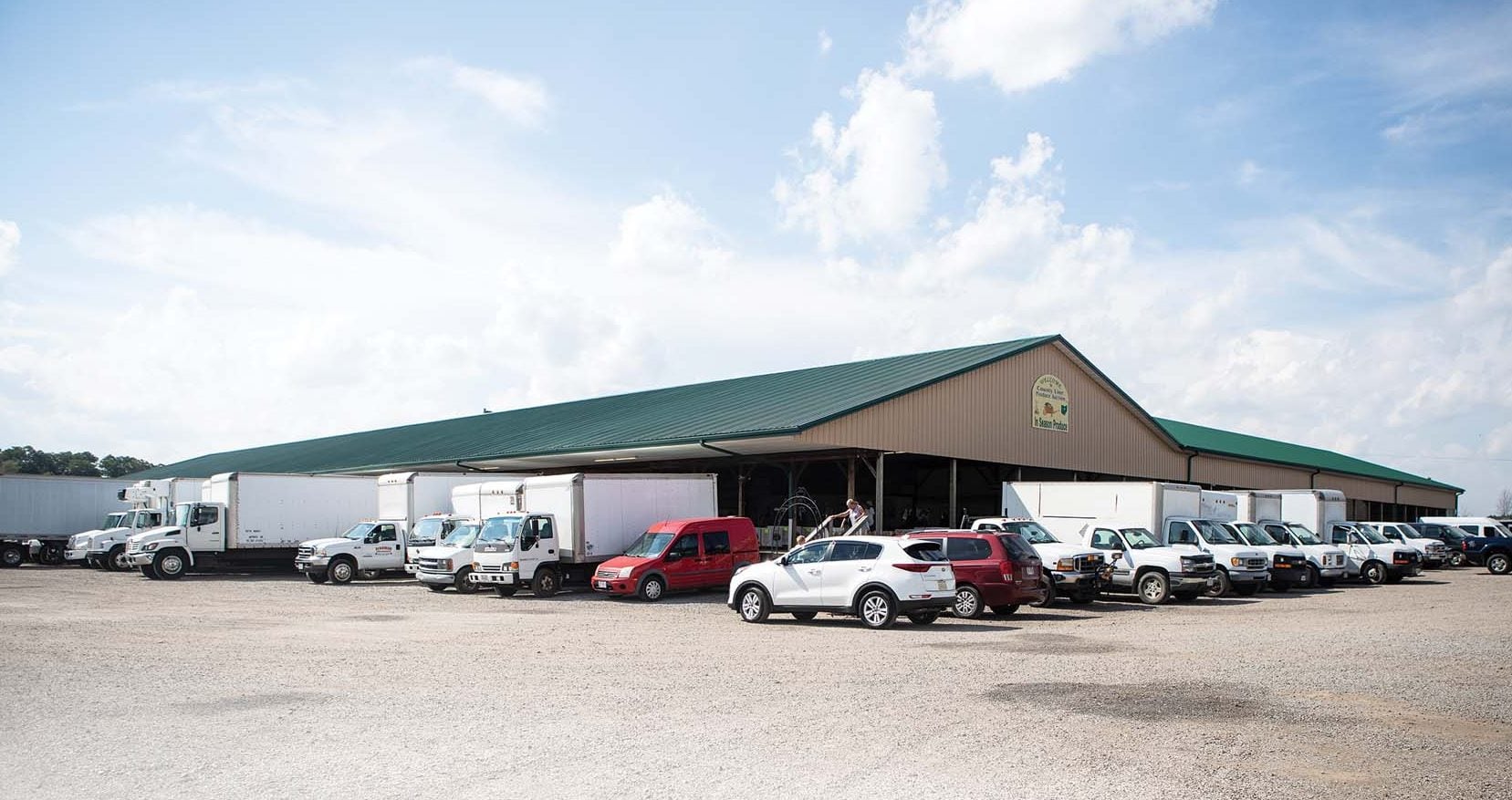
With so many buyers and sellers coming together near and far, the COVID-19 outbreak has presented a unique set of challenges. Fortunately, it started in the off season allowing for auction staff to place some protocols for the coming season.
DeFelice said they will be implementing practices including social distancing by spreading out lots so buyers can maintain a 6-foot distance. Usually the auction attracts many spectators, who enjoy busy evenings watching the sale.
“A big thing we’re doing this year is encouraging serious buyers only without spectators,” he said. “If our buyers can’t physically make it here, we encourage them to utilize the order buyer system we have where they can call in and we can send someone to bid on their behalf.”
Additionally, there will be no table lots of handmade goods to buy and carry out, but small lots will still be sold in a separate ring away from the wholesale items.
In spite 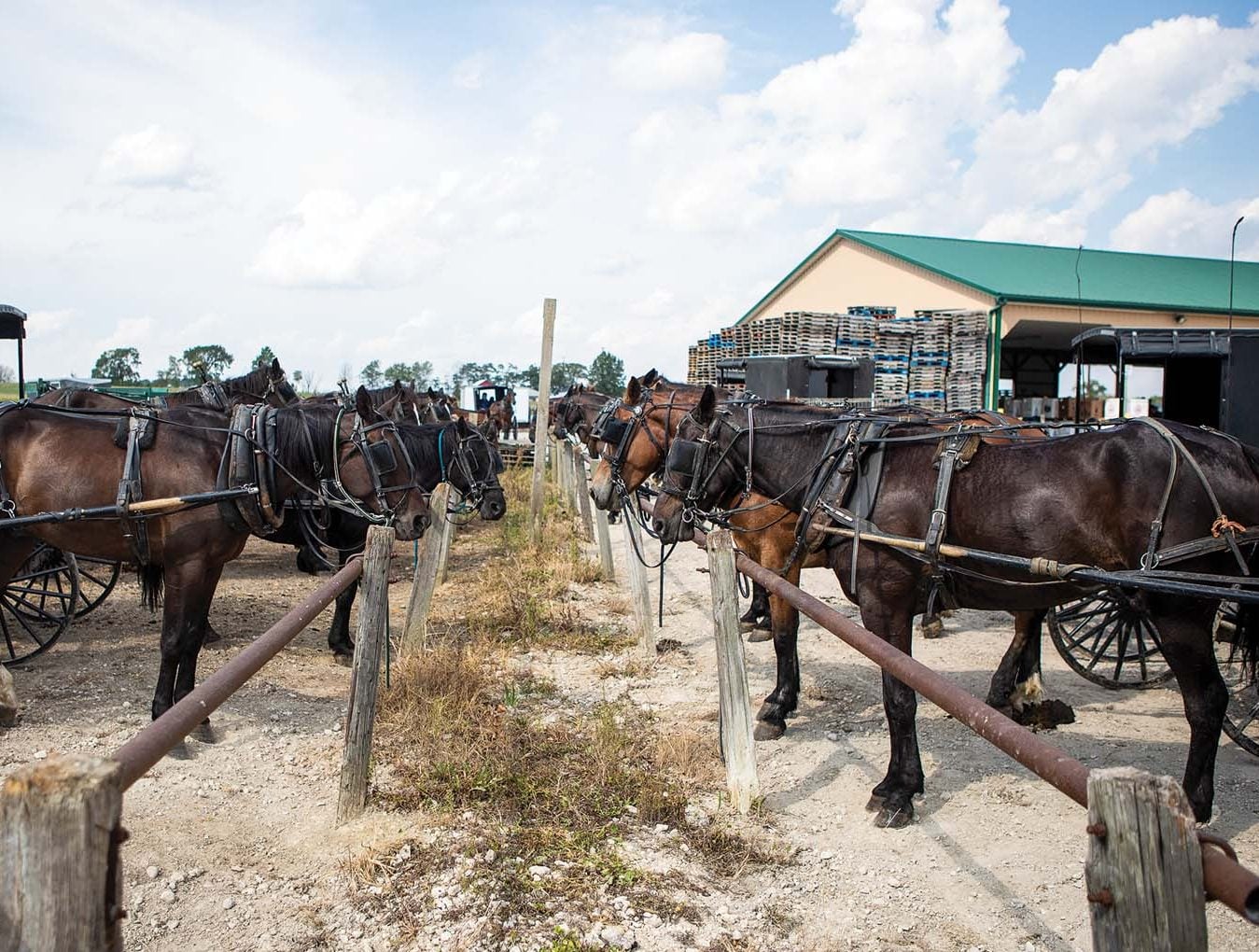 of the changes headed their way, DeFelice believes their sale is one of the best opportunities available for local farmers.
of the changes headed their way, DeFelice believes their sale is one of the best opportunities available for local farmers.
“Growers who market to one buyer or one co-op may find things get flooded and when that happens they may not have an option to sell,” he said. “With the auction they can drop their product off, everything sells, and they can go back and focus on the farm. They don’t have to worry about marketing: here it’s like a commodity and we find it brings a better price.”
It’s the relationship of maintaining good strong connections with buyers and sellers that has really set County Line apart.
“We try to run a clean establishment. We try to treat people the way we want to be treated and we’ve got a great community here with strong support,” DeFelice said. “Our buyers know they’re getting the best there is.”


Members have three ways to apply: contacting a certified agent, calling 833-468-4280 or visiting ohiofarmbureauhealthplans.org.
Read More

One of the best decisions Shannon and Heather Utter made a few years ago was looking into a Farm Bureau member benefit that has ended up saving them thousands of dollars on their energy bills.
Read More

Ryan Hiser has experienced first-hand the importance of having the opportunity to vote on issues that will affect his family operation and other farmers.
Read More

Bill Patterson, Cy Prettyman and Adele Flynn will continue to serve as officers for Ohio Farm Bureau Federation.
Read More

Delegates discussed many topics impacting agriculture including farmland preservation, local foods, and succession planning.
Read More

Twenty-six farmers govern the state’s largest farm and food organization.
Read More

The 2025 recipients are Fred Cooke (posthumous) of Richland County, Marvin Dietsch of Williams County, Steven Knollman of Hamilton County and Michele Miller (posthumous) of Ottawa County.
Read More

Nathan and Jill Parriman grow seasonal crops, including Christmas trees, pumpkins and cut flowers, providing U-cut experiences that invite customers to engage directly with agriculture.
Read More

The 2025 Distinguished Service Award recipients are Craig Adams, Mike Townsley, and Kellogg Farms, Kurt Farms and Stateler Family Farms.
Read More

Ohio Farm Bureau Treasurer Adele Flynn participated in the meeting, representing Ohio farmers.
Read More